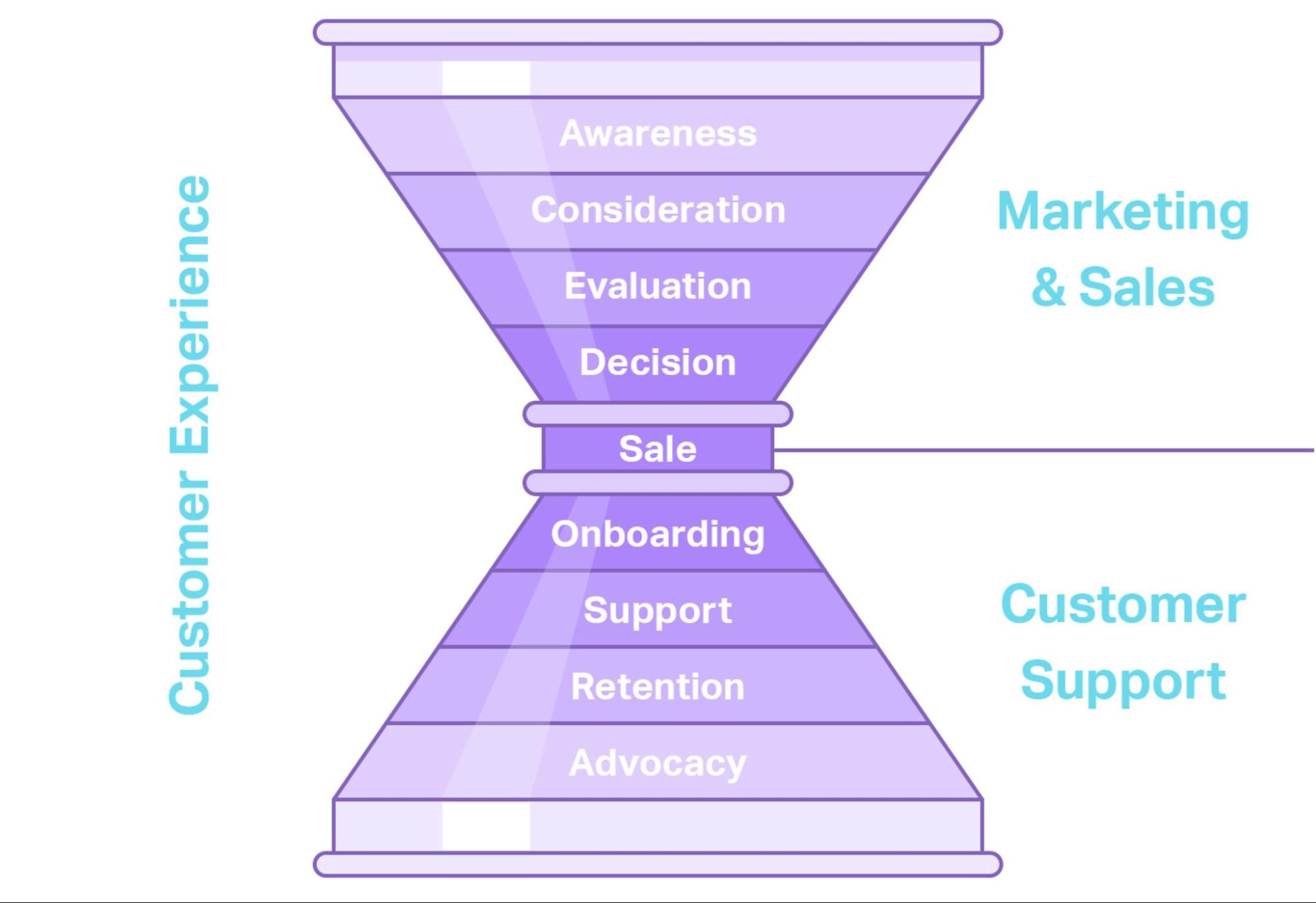A funnel is a business term generally used with regards to sales and marketing. Customers are made aware of your company, then marketed to, then eventually a sale is made. These are the initial stages of a customer’s journey, their conversion from a merely potential customer to an actual buyer.
However, an alternative kind of funnel exists – the customer support funnel. This funnel focuses on the post-sale customer and the later parts of their journey. Instead of sales, the aim of this funnel is to retain customers and encourage loyalty among them.
What Does a Customer Support Funnel Do?
A customer support funnel is simply a way of visualizing the customer’s journey with your business beyond the actual sale of your product. However, this visualization is immensely helpful as it allows you to plan and improve your existing customer support process – and as you already know, effective and streamlined customer support is an essential part of any business.

The classic customer support funnel has four stages, which we’ve detailed below. This can help you divide the task of customer support into smaller, more manageable sections. Furthermore, these smaller stages allow you to more clearly analyze each section of the customer support journey. This means that the customer support funnel can help you measure how effective your support procedures are, as well as helping you plan them.
The 4 Stages of a Customer Support Funnel
1. Onboarding
If something goes wrong during customer onboarding, it jeopardizes the whole support funnel. To prevent your customer support funnel from becoming a failed process, you need to do two things during customer onboarding.
First, deliver on all the promises you made while marketing and selling the product to the customer. As obvious as this seems, many businesses fail to provide the item that they’ve initially promised, either by over-promising during marketing or by onboarding poorly. You can avoid this by being honest and transparent when discussing your product’s capabilities.
Second, ensure the customer is properly trained and educated in the use or purpose of your company’s product or service. As long as you’ve provided basic instructions, this is less important, as you can make up for any gaps in your customer’s knowledge during the next stage.
2. Service
This stage is what most would think of as customer support. When a product you’ve provided malfunctions, or a customer has follow-up questions about your services, you need to be on hand to help.

Receiving customer support from a human operator is more popular amongst customers than support from automated services. This means everything from online video calling, to customer service helplines, to live chat features on your website should be your first ports of call.
However, they should by no means be the only channels you’re available on. Being contactable by a variety of means is essential in customer service.
3. Retention
Retention differs from service in that it’s less about being available for when the customer needs help, and more about proactively engaging with the customer.
Good retention tactics include things like loyalty programs, or sending customers product information via email. Educating your customers on the best uses and practices for your product will increase the benefit they gain from it, and therefore boost their loyalty to your company.

Smart social media marketing is also essential at this stage. Customers may take to social media to complain about or compliment your company, and you need to be able to respond in both of these instances. If you resolve their issues, you will have demonstrated your business’s competency on a very public stage.
4. Advocacy
If you’ve fulfilled the previous three steps correctly, you’ll be able to reap the benefits of this fourth stage. Effective customer support promotes brand loyalty, and loyal customers are likely to advertise your effectiveness to other customers.
Your responsibility during this stage is to provide a platform for your customers to advocate for your business’s strengths. Providing community forums on your website, asking for reviews and testimonials, or having a social media group for customers are all great platforms to provide your customers with.
Top Tips for Effective Support
Although there are multiple stages to the customer support funnel, there are a few factors that are important at every stage. The two foremost factors are availability and consistency.
You don’t know when a customer is going to need assistance, so the best policy is to always be available. This can be difficult to do with human staff, but with even a small amount of automation, your business can be available to support customers 24/7.
Another way to give customers constant support is by having engaging and informative self-service content on your website. This will help customers help themselves, and demonstrates great customer support with very little effort (beyond the initial article creation).
Consistency is the other key factor in a customer support funnel. It’s bad practice to provide a customer with one piece of advice during onboarding, but then give conflicting advice when you’re doing social media for customer retention. This kind of mistake can be avoided by providing clear processes to be followed during customer support. Training your staff in such a way that they retain these processes is also vital to maintaining consistency.
Measuring Success
In order to succeed in today’s crowded marketplace, you should seek to drive continuous improvement within your business. Without that continuous improvement, you’re likely to fall behind your competitors. However, how do you know that what you’re doing is actually for the better? How can you measure success?
This is where the customer support funnel comes in.

Customer service software can track and record the interactions your employees have with customers, but it can provide dense, undecipherable results if you don’t establish a customer service funnel first.
With the funnel, you can analyze each stage individually, and receive results that are clearer and more actionable. There are a variety of benchmarks and measurements tracked by these software tools, such as Average Response Time, Customer Satisfaction Ratings, and Net Promoter Score. Experiment with a variety of these measurements to work out which is most relevant to your business.



